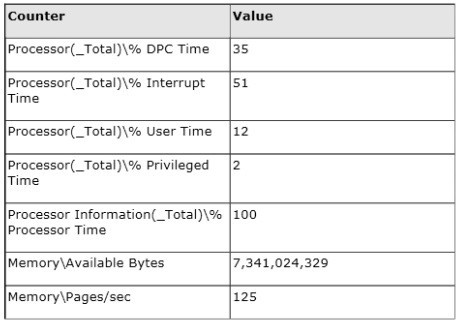

You have a server named Server1 that runs Windows Server 2012 R2.
You discover that the performance of Server1 is poor.
The results of a performance report generated on Server1 are shown in the following table.
You need to identify the cause of the performance issue.
What should you identify?
Comments